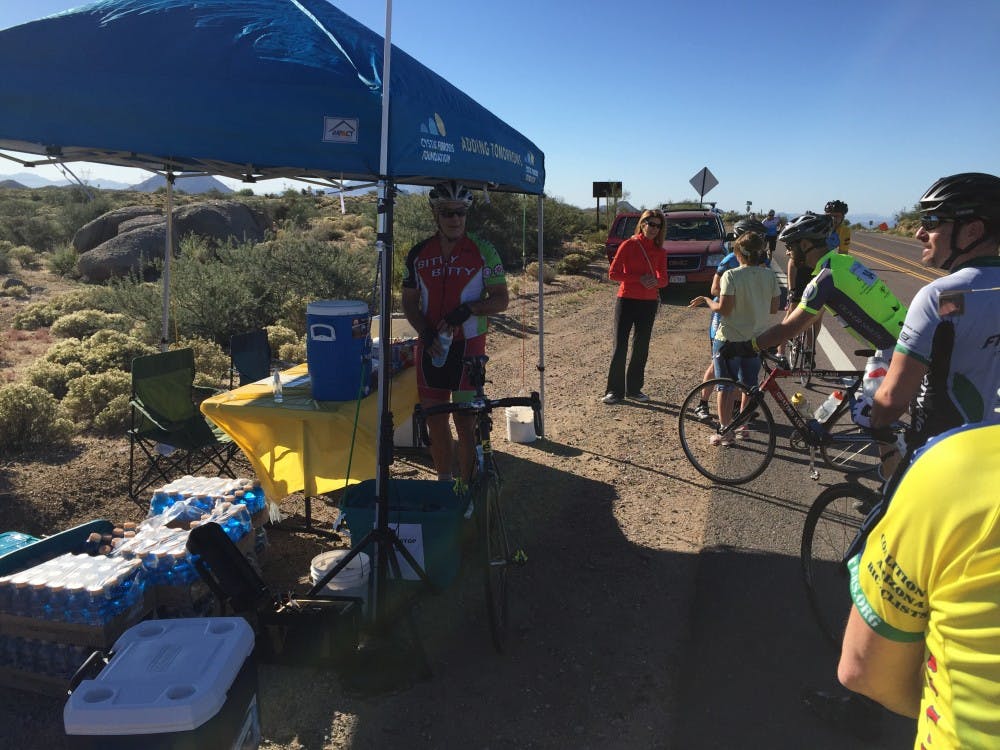The word radio is often associated with music and talk show chatter, but the Amateur Radio Society is exploring the lesser known side of radio — its role in facilitating communication and winning wars.
The club uses radio communications to facilitate an interest for students who would like to explore the hobby of the wavelengths of possibilities that come with amateur radio.
President and electrical engineering junior Zach Burnham said amateur radio has anything to do with point to point communication.
“I just want to extend the opportunities that I found to other students because I love working on projects, and I think that HAM radio is a really great way to find projects,” Burnham said.
However, a major keystone of the club isn't just exploring radio, it's extending a hand to the community. They help with two main events throughout the year, one in the fall and one in the spring.
In the fall, they help with event communications emergency response support at the Cycle for Life, which benefits patients with cystic fibrosis.
He said that during the race, he and the club set up portable radio stations at each of the rest stops to help coordinate supplies and relief efforts in case the need for them were to come up.
They work with the event coordinators and are on hand to call emergency services if needed.
In the spring, they work on building and flying a high altitude balloon, which they track as it moves in the sky. They’ve done two launches so far and have plans to do a third this month.
“It’s an opportunity to show one of the other things you can work on with the HAM radio,” Burnham said.
Burnham said he’d like to partner with an emergency services student group to create a volunteer emergency response network. He also said he’d like to expand the balloon launching aspect of the club.
“Ultimately, one of my goals is to establish the group as a balloon launching entity so that we could do regular balloon launches and have other student organizations participate in that as well,” he said.
Computer science and computer systems engineering senior Ryan Hermens said he met Burnham when he was a junior and that he told him all the things that could be done with radio, such as contacting the International Space Station.
“I like that it gives us a chance to meet new people and to help out," Hermens said. "For instance, very recently we had people from STEMS, Student Emergency Medical Services, organization come talk to us. Apparently, they actually need radio operators so we might just be volunteering to help them pretty soon."
He currently holds a general class license with the Federal Communications Commission, although he said that this club is strictly a hobby for him.
James Aberle, adviser for the club and associate professor of electrical engineering, said the club had been relatively inactive for a number of years prior to this recent resurgence of interest.
“Recently some students got very interested in reactivating it again,” he said. “Key among these students was Zach Burnham.”
Aberle also holds a general class amateur radio license and said he has been interested in radio since he was about 11 or 12 years old. He said that when he was younger, radio and television were more more hands-on media.
“There’s something that just appeals to me about being able to communicate over long distances through something that is not visible and yet it can have an impact,” Aberle said. “Sort of this mysterious force in nature.”
He said that as the club’s adviser, he oversees the club’s activities and helps the members get recognition from other engineering faculty members.
He hopes for the club to remain active, for participation to grow and for them to be involved in public service opportunities.
“Amateur radio, one of the things it’s known for is actually to help with emergency communications,” Aberle said. “It’s oftentimes the last type of radio communications that’s still around in a disaster.”
Related links:
Student radio fights to stay current
ASU radio station hosts 'Live and Local' charity concert in downtown Phoenix
Reach the reporter at avcabral@asu.edu or follow @angeligagaa on Twitter.
Like The State Press on Facebook and follow @statepress on Twitter.




